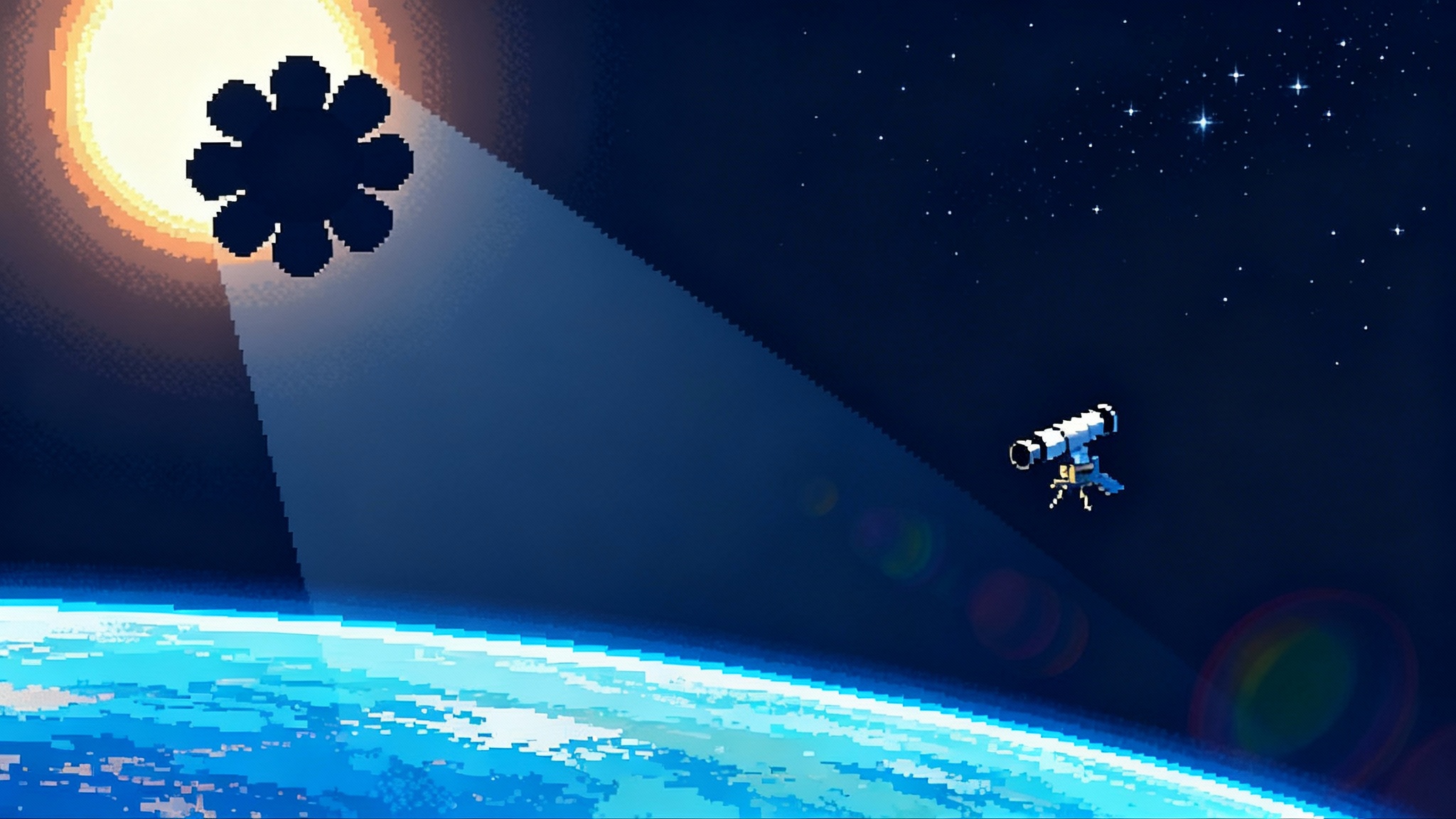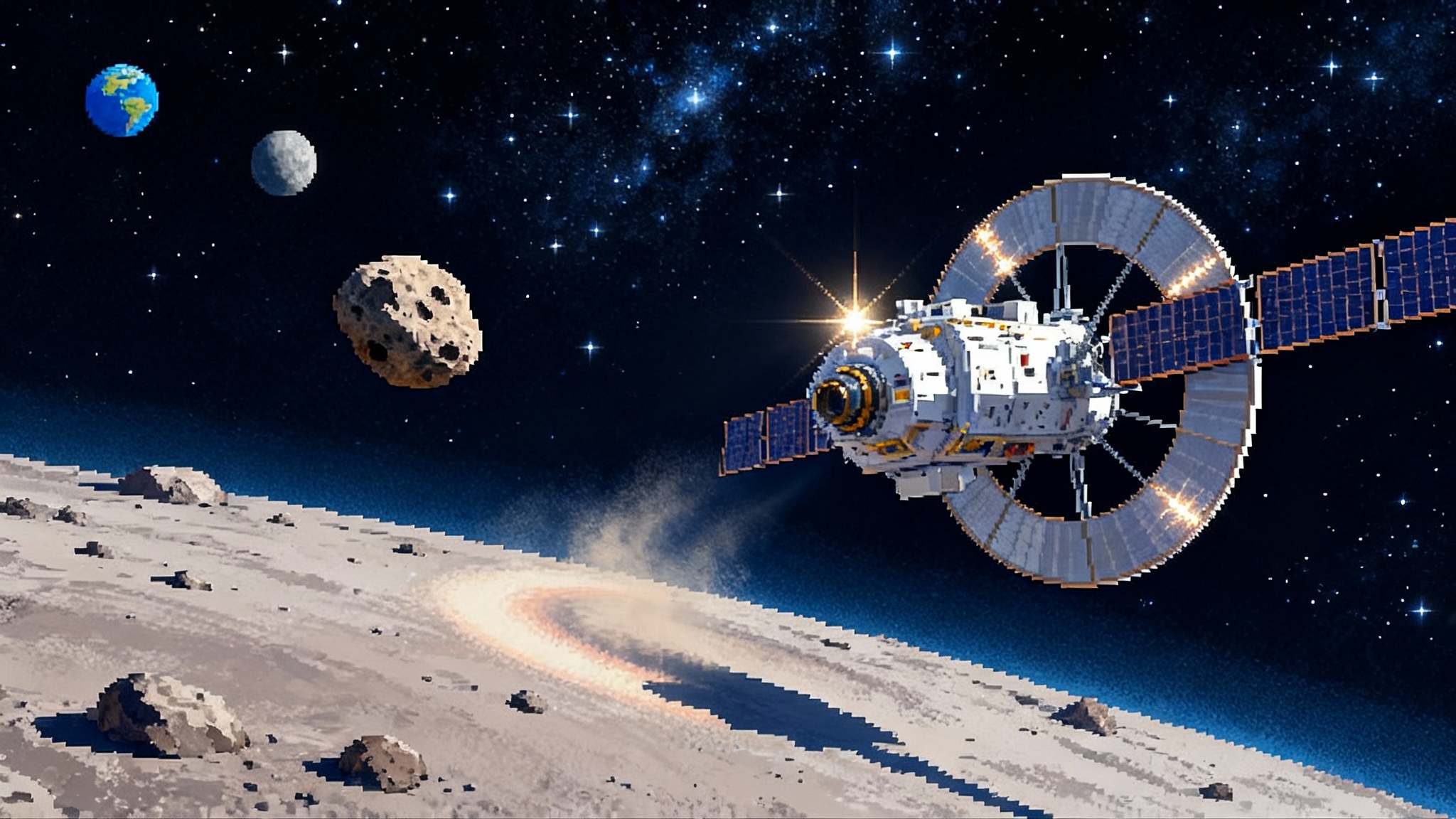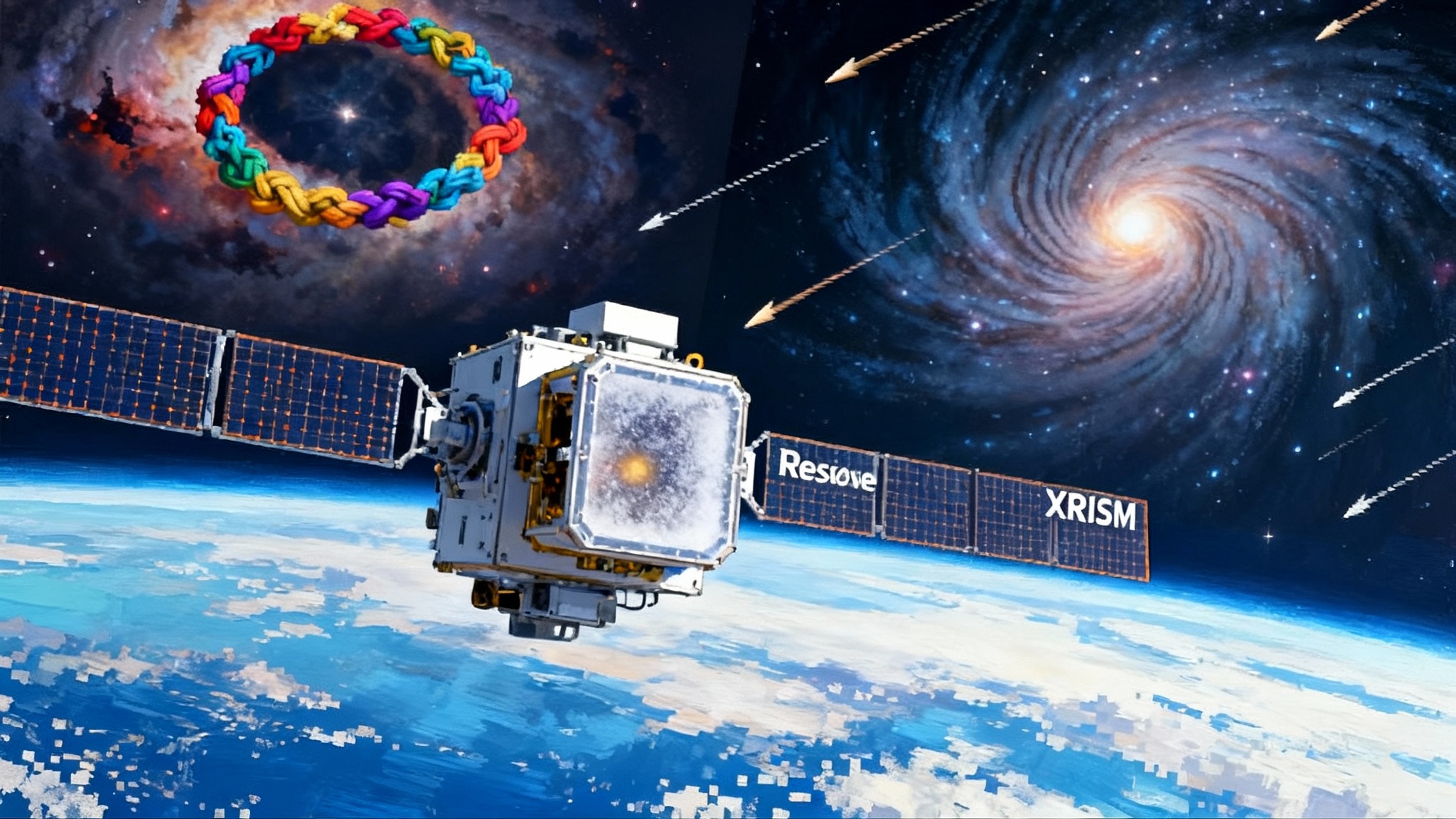Proba-3’s artificial eclipses launch formation telescopes
Two ESA satellites flew 150 meters apart to block the Sun and reveal the corona for hours, proving precision formation flying that points to starshades, modular observatories, and sharper space‑weather forecasts.

Breaking: Europe turns daylight into night on command
On a June morning in 2025, two small European satellites slid into perfect alignment 150 meters apart and pulled a curtain over the Sun. In that instant they created the world’s first artificial total solar eclipse in space, revealing the delicate streamers and loops of the Sun’s corona with a clarity that ground observers usually wait decades to glimpse for a few hurried minutes. The European Space Agency’s Proba-3 pair, one spacecraft acting as an occulting disk and the other as a coronagraph, flew as if they were a single rigid instrument. The pair held their alignment with millimeter accuracy for hours, all without joystick help from Earth. ESA released the first images and details of that achievement, marking a new era for precision formation flying in orbit and for how we will build telescopes. ESA’s first artificial eclipse announcement captures the moment.
This is not a parlor trick. It is a technology pathfinder with immediate scientific impact and long reach into the future of space astronomy.
How to build an eclipse with two boxes in space
A coronagraph hides the Sun’s glaring disk so that faint coronal light can be seen. Traditional coronagraphs put the blocker inside the same telescope, but internal masks must fight diffracted light that leaks around edges, and they struggle to see close to the Sun’s limb where many coronal mysteries live. Proba-3 splits the task in two. One satellite, the Occulter, is simply a flying shadow-maker. The second, the Coronagraph, carries the telescope. Separate them by the length of a city block and you get a clean geometric shadow. Put the telescope at the very center of that shadow and the Sun’s edge becomes quiet enough to study.
If that sounds easy, try this mental model. Imagine two camera drones fifty stories apart over a city park. Now keep them lined up to within the thickness of a grain of sand while they circle Earth together, cross bright and dark backgrounds, and shrug off thermal tugging from sunlight. That is Proba-3. The mission fused laser ranging, vision-based navigation, star trackers, radio links, and a shadow-position sensor into a guidance system that can lock the Coronagraph’s entrance pupil into the Occulter’s umbra with millimeter fidelity. The autonomy matters. Commands cannot keep up when you need continuous sub-millimeter tweaks. The pair learned to hold hands on their own.
Behind the scenes is a European industrial ensemble. Sener in Spain led the consortium, with major roles for GMV and Airbus Defence and Space in Spain, and Redwire Space and Spacebel in Belgium. Belgium’s Centre Spatial de Liège built the ASPIICS coronagraph, and the Royal Observatory of Belgium is processing science data. A compact team, a precise result.
More totality in two years than a lifetime of road trips
Artificial totality changes the coronal science trade. Natural eclipses grant a few minutes of perfection once or twice a year somewhere on Earth, and weather can still steal the show. Proba-3 can schedule hours of totality per eclipse, perform them repeatedly through the year, and target favored geometries. That means researchers can watch the inner corona evolve continuously through solar rotation, not just snapshot it during brief events. The region just above the Sun’s visible edge is where closed magnetic loops open into the solar wind and where coronal mass ejections set their roots. Even improvements of tens of minutes per observing session unlock the ability to follow structures as they twist, merge, and launch.
Think of it as moving from Polaroids to time-lapse cinematography. Instead of stitching together isolated, weather-limited images from expeditions, solar physicists can build sequences that connect cause and effect. The scientific questions are specific. What drives the million-degree temperature of the corona when the surface below is only thousands of degrees? Which magnetic rearrangements in the inner corona actually trigger large eruptions, and which just fizzle? How does the energy budget flow from small scale braiding to global storms that rattle planetary magnetospheres? Proba-3’s design targets those exact puzzles by cutting stray light to the bone and by staying locked close to the solar limb.
Why millimeters matter
Coronal imaging is contrast warfare. The corona is millions of times fainter than the Sun’s disk. Any sliver of misalignment, any edge that diffracts, and your detector floods with stray light that buries the signal. Move the Coronagraph even a few millimeters off the centerline and you are no longer in perfect darkness; a floodlight has slipped into the scene. Millimeter precision buys multiple orders of magnitude in usable dynamic range, which in turn lets the instrument see closer to the Sun’s edge with less post-processing. That is how Proba-3 wins with such a modest aperture.
Millimeters in relative position also reduce calibration headaches. If the relative geometry is stable, you can model and subtract the remaining glints and ghosts far more confidently. Proba-3’s sensor blend is designed for that stability. The Occulter carries a laser that pings a retroreflector on the Coronagraph. A dedicated sensor measures light around the telescope aperture to steer the pair deeper into the shadow. Autonomy software fuses those measurements with star tracker and radio data into gentle continuous thrusting. The payoff is a clean view without constant ground loops.
The dress rehearsal for starshades
Proba-3 is a scaled demonstration of the choreography needed for the most ambitious direct-imaging idea in astronomy: the starshade. A starshade is a steerable flower-shaped screen that flies tens of thousands of kilometers in front of a space telescope to block a star’s light so the faint glow of orbiting planets can be seen. Formation flying is the core risk. If the shade drifts or tilts, unwanted starlight leaks into the telescope, and contrast collapses.
NASA’s Exoplanet Exploration Program describes what that takes in practice. A starshade would fly on a separate spacecraft roughly 20,000 to 40,000 kilometers from a telescope and suppress starlight by a factor of one part in ten billion, enough to reveal Earth-sized planets in the habitable zones of nearby stars. The separation is huge, the alignment tolerances are punishing, and yet the physics rewards are compelling. The agency’s Starshade to Technology Readiness Level 5 activity has been maturing the key pieces, from petal deployment accuracy to formation sensing and control, to make such a mission flight-ready. For a concise technical overview, see NASA’s summary of starshade technology and distances.
Proba-3 does not prove a starshade outright. It does prove the central habit of mind and machine: two independent vehicles can act as one optical instrument for long stretches with very tight alignment, and they can do it autonomously. It pushes formation sensing and control out of the lab and into space, where thermal cycles, radiation, and orbital dynamics are real.
Toward kilometer-scale virtual observatories
Once you accept that spacecraft can be separated and still behave like a single instrument, the aperture stops being a piece of metal and becomes a geometry problem. Picture a future ultraviolet telescope 50 meters across, except it is not a single mirror. It is a sparse array of smaller mirrors and beam-combining optics that fly in a precise configuration to synthesize a large effective aperture. The same idea is already standard in radio astronomy, where arrays like the Very Large Array combine dishes to achieve long baselines. Optical formation flying is harder, but no longer fantastical.
The path goes stepwise. Starshades let us resolve and spectrally characterize exo-Earths with a single telescope and a cooperating shade. Later, formation-flying interferometers spread multiple collectors across hundreds of meters to a few kilometers, opening surface mapping of the nearest rocky worlds. At that point, chemistry turns into climate. Instead of single-shot spectra, you can follow seasons on a planet ten light-years away, watch clouds and continents rotate, and test whether atmospheric oxygen coexists with methane in ways that hint at biology. The same architectures unlock sharp imaging of black hole environments and of the earliest galaxies where internal structures remain blurred today.
The most practical leap in this direction is not the far-off kilometer-scale array. It is a near-term pattern of modularity. Make observatories from parts that can fly separately, be upgraded, and be replaced on timescales that track technology. Detectors can be swapped without retiring the entire system. Shading or beam-combining elements can scale with demand and budget. We saw similar modular payoffs when HTV‑X1 rewired space cargo.
Better space weather, sooner
Closer to home, more totality adds discipline to space-weather forecasting. Coronal mass ejections begin as subtle reorganizations in the inner corona. With hours of continuous coverage near the solar limb, models can incorporate the exact timing and shape of an eruption at its root rather than inferring it from later signatures. That should improve lead times for geomagnetic storm alerts and narrow uncertainty bands for impacts on satellites, aviation, and power grids. Daily operations need fewer false alarms and fewer surprise hits. The extra cadence will also sharpen background models of the steady solar wind by linking small changes in coronal holes to downstream effects at Earth. That same data discipline underpins XRISM’s cosmic weather mapping.
The software tail is as important as the hardware dog. With regular, high-quality inner-corona data, data assimilation techniques that weather agencies apply in Earth forecasting can be adapted to heliophysics. That calls for stable calibrations and rigorous metadata. Proba-3’s precise alignment and repeatable geometry are exactly the ingredients that machine learning methods crave, not to replace physics but to constrain it in real time.
The economics of flying in parts
Formation flying is not only a science play. It is an economic strategy. When instruments and light blockers are separate spacecraft, you can build, test, and launch on staggered schedules. You can amortize complex metrology across multiple missions. You can refurbish half a system in orbit or replace a single module after a failure without scrapping the whole observatory. Insurance structures can start to look more like fleets than single-point bets.
This is already visible in the Proba-3 supply chain. A network of specialized small and medium companies contributed focused hardware and software. That spreads risk and allows each node to find adjacent markets. Laser metrology for formation flying has cousins in in-space servicing. High-fidelity shadow sensing has cousins in Earth imaging where stray light and glint control are headaches. Autonomy stacks that kept Proba-3 steady can be adapted to swarms for climate monitoring, radio interferometry, or even on-orbit manufacturing.
Modularity also encourages competition inside a mission. If your telescope bus has a standard interface for a starshade partner, multiple teams can propose compatible shades with different performance and cost points, and the best option can be selected late without redesigning the entire system. That is how you reduce the long lead-time traps that have haunted flagship missions. The cadence lesson rhymes with Starship’s orbital refueling progress.
What to do next
For space agencies
- Publish a formation-flying interface standard. Define how two independent spacecraft agree on relative frames, exchange metrology, and negotiate control authority. Make it as public and as testable as the docking standards that enabled commercial crew vehicles.
- Fund a starshade rendezvous tech demo. A subscale shade flying a few thousand kilometers from an existing telescope would close the last major risk faster than paper studies ever could.
- Build the mission road map as a ladder. After Proba-3, plan a visible-light starshade demo, then a small interferometric pathfinder with three collectors, then a mid-scale array. Keep the cadence tight enough that teams and supply chains do not drift away.
For industry
- Productize the metrology. Sell formation sensors and autonomy software as packages that can be integrated on third-party buses. Offer simulation environments where customers can test their guidance and control against realistic thermal and radiation cycles.
- Pursue dual-use. The same formation control that holds an occulting edge steady can hold optical mirrors in a synthetic aperture for Earth imaging, or keep inspection drones in alignment during in-space servicing.
For the research community
- Treat Proba-3 data as a training set. Use it to build and validate coronal models that can be assimilated into operational forecasts. Publish benchmarks so improvements are measurable and reusable.
- Push for operations-style data discipline. That means documented calibrations, versioned pipelines, and open test scenes. The community gains when methods can be audited and ported to future missions without reinvention.
The dawn after totality
A solar eclipse has always felt like a gift of celestial choreography. Proba-3 turns it into a tool. By proving that two free-flying spacecraft can act as a single optical instrument with millimeter poise for hours at a time, Europe has crossed a threshold. The immediate prize is a sharper, steadier look at the engine of space weather. The larger prize is confidence. If you can hold a shadow this steady at 150 meters, you can hold mirrors in formation across the spans needed for virtual observatories.
The telescope is no longer a monolith. It is a dance. Proba-3 taught the first steps. The next choreographies are already on the rehearsal schedule.








